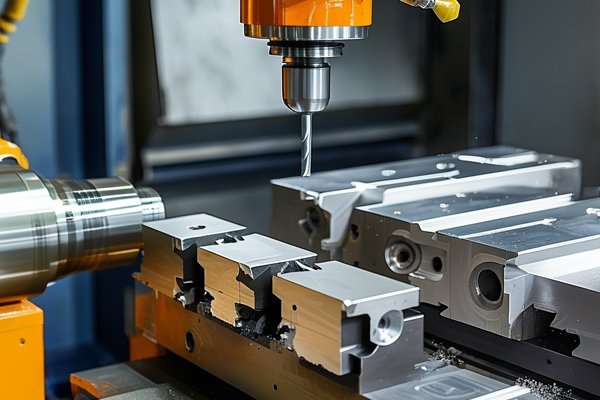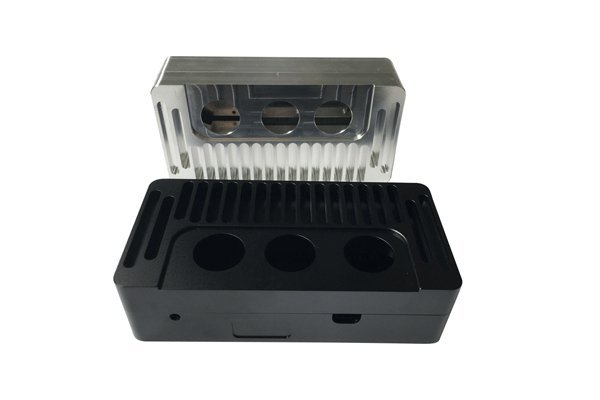Opening:
Did you know that achieving a specific surface finish, such as RA 0.8, can significantly enhance the performance, aesthetics, and longevity of aluminum components? In the realm of CNC (Computer Numerical Control) machining, the selection of the right tools plays a pivotal role in not only achieving desired surface finishes but also ensuring high precision and efficiency. With the increasing demand for high-quality machined parts in industries such as aerospace, automotive, and electronics, understanding the impact of tool selection on surface finishes is paramount.
Content:
Understanding Surface Roughness
Surface roughness, often denoted as RA (Roughness Average), is a critical measure in the manufacturing process that reflects the texture of a surface. The lower the RA value, the smoother the surface. RA 0.8 is recognized in many industries as the threshold for a fine finish, suitable for parts that require minimal friction, improved fatigue resistance, and enhanced aesthetic appeal.
The importance of achieving RA 0.8 in aluminum parts cannot be overstated. Smooth surfaces can lead to better performance in various applications, reduce wear and tear during operation, and create favorable conditions for subsequent processes, such as coatings or anodizing.
Tool Selection: A Crucial Factor
Choosing the right tool for CNC machining is key to achieving the desired surface finish. The following factors play significant roles in tool selection:
The type of tool material directly affects cutting performance and surface finish. Common materials include High-Speed Steel (HSS), Carbide, and Ceramics. Carbide tools, for instance, can withstand greater temperatures and maintain sharpness longer than HSS, making them an excellent choice for high-volume production when looking to achieve RA 0.
The geometry of the cutting tool, including flute shape, rake angle, and edge radius, affects how the tool interacts with the material. A tool with an appropriate rake angle can minimize cutting forces and vibrations, contributing to a smoother finish. Additionally, rounded edge tools can help achieve finer surface finishes by reducing the tool marks left on the material.
Tool coatings, such as TiN (Titanium Nitride) or TiAlN (Titanium Aluminum Nitride), can enhance tool life and reduce wear. These coatings help in achieving a better surface finish by minimizing friction and preventing material build-up on the tool, which can negatively affect the final product’s roughness.
The diameter of the tool affects the depth of cut and surface contact area. Using smaller tools for tight radii or complex geometries can help improve the surface finish. However, simply using smaller tools isn’t always the answer; they must also be matched to the machining strategy being employed (e.g., finish vs. roughing).
Machining Strategies for Achieving RA 0.8
The approach to machining aluminum to obtain an RA 0.8 surface finish involves careful planning and execution. Here are some essential strategies that can be employed:
Parameters such as feed rate, cutting speed, and depth of cut must be carefully optimized. Higher cutting speeds with lower feed rates tend to improve surface finishes but require balancing productivity.

Techniques like finish milling and polishing serve distinct purposes. While finish milling removes the majority of the material to create a smoother surface, polishing can significantly enhance the final finish. Each technique requires precise tool selection and machining parameters that align with achieving a target RA value.
Vibration during the machining process can lead to poor surface finishes. Utilizing suitable fixturing and machine settings, such as increasing tool stiffness and adjusting spindle speed, can reduce vibrations and help maintain a smoother finish.
The CNC program should closely consider toolpath strategies, such as adaptive machining or constant engagement. Smooth, continuous tool movement reduces abrupt transitions that can lead to inferior surface finishes.
Sometimes, achieving the desired surface finish cannot solely rely on machining. Processes like deburring, polishing, or even surface treatment techniques can smooth micro-irregularities left after CNC operations.
Monitoring and Maintaining Quality
To ensure that the desired surface finish is achieved consistently, regular monitoring through process controls and measurements is necessary. This includes:
Use of roughness gages to measure the surface finish throughout the production run. This ensures that adjustments can be made promptly to avoid deviations from the target RA.
Invest in CNC machinery and systems capable of real-time feedback on tool performance and workpiece condition. Adjustments can then be made instantaneously to correct any discrepancies from the desired finish.
Dull or worn-out tools can drastically impact surface finish. Establish a schedule for inspecting tools and replacing them proactively to maintain quality.
Achieving an RA 0.8 surface finish on aluminum parts through CNC machining hinges on meticulously selecting the right tools and using the correct machining techniques. Understanding the interplay between tool materials, geometry, coatings, and machining strategies allows manufacturers to enhance the quality of their products significantly.
This blog underscores the importance of detailed knowledge in tool selection and machining parameters—crucial aspects of modern manufacturing. Companies that focus on these elements can not only meet industry standards but also differentiate themselves in a competitive landscape. By continually assessing and refining machining practices, businesses can ensure high-quality outputs and customer satisfaction.
As CNC machining evolves, the need for precise tooling and techniques will only grow. Staying informed, adaptable, and proactive in understanding these concepts will be beneficial for anyone involved in manufacturing processes. The pursuit of excellence in machining is not merely a technical endeavor; it’s a commitment to quality that bears the potential for untold advancements in performance, aesthetics, and ultimately, market success.
—






